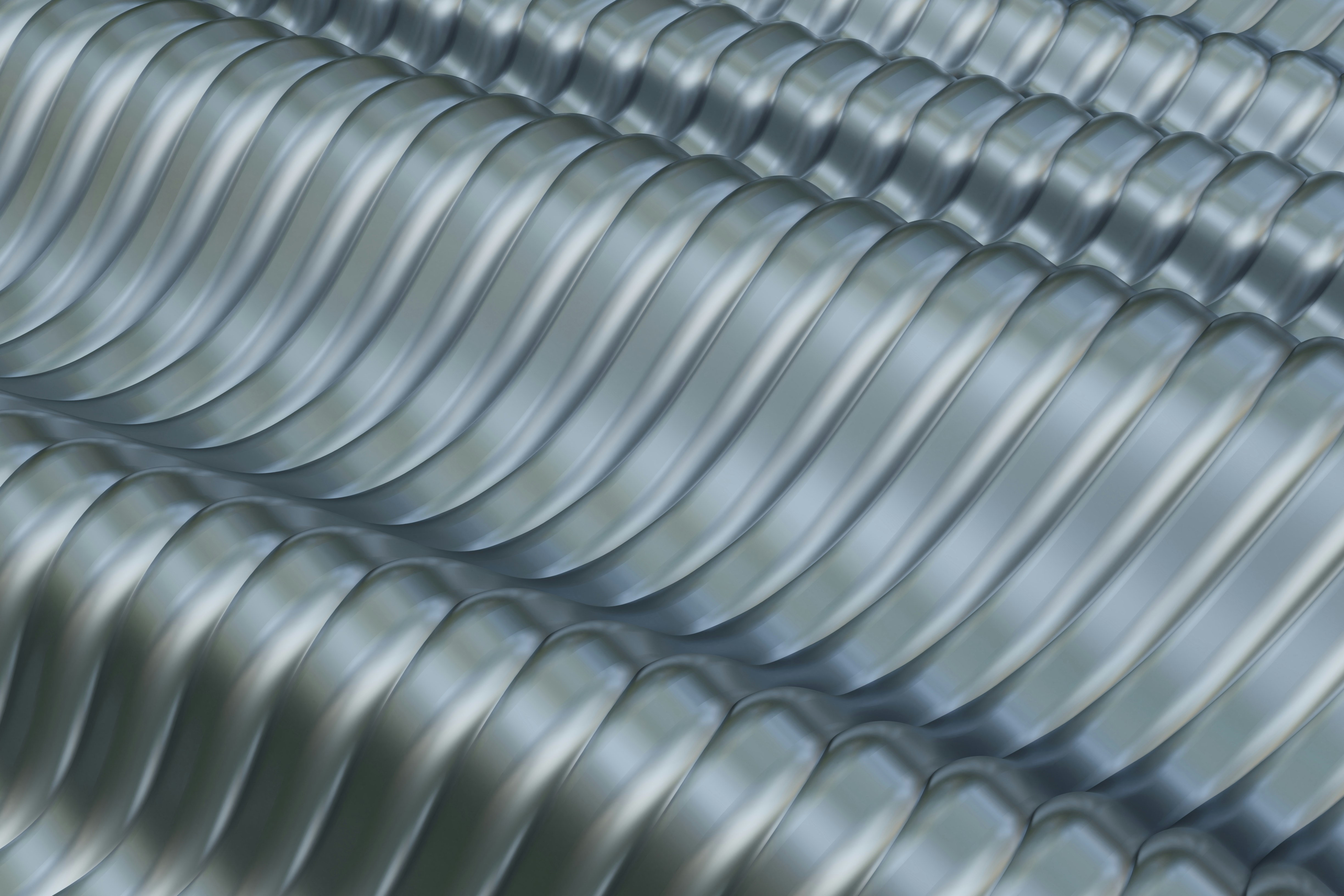Are you a fan of cooking with carbon steel pans but unsure about the best practices for seasoning and caring for them? Well, look no further! In this article, we will explore the tried and true methods to achieve that perfect non-stick surface on your carbon steel pan and provide you with tips on how to care for it properly. Whether you’re a seasoned pro or just starting out, these helpful tips and techniques will have your carbon steel pan performing its best and lasting for years to come. So, let’s get cooking and discover the secrets to maintaining the perfect carbon steel pan!
Seasoning a Carbon Steel Pan
Seasoning a carbon steel pan is an essential step in maintaining its quality and ensuring optimal cooking performance. By following these best practices, you can prolong the lifespan of your pan and enjoy its non-stick properties for years to come.
Clean the pan thoroughly
Before seasoning your carbon steel pan, it’s important to clean it thoroughly. Remove any stickers or labels, and wash the pan with warm water and a gentle scrub brush. Avoid using harsh cleaning agents or abrasive sponges, as they can strip away the pan’s seasoning.
Coat the pan with oil
Once the pan is clean and dry, it’s time to coat it with oil. This will help prevent rust and create a non-stick surface. Choose a high smoke point oil such as vegetable oil, grapeseed oil, or flaxseed oil. Pour a small amount of oil onto the pan and use a paper towel or cloth to spread it evenly across the surface, including the sides and handle.
Heat the pan
After applying the oil, heat the pan over medium heat. This will help the oil penetrate the pores of the carbon steel, creating a durable seasoning layer. Allow the pan to heat for a few minutes until it starts to smoke slightly. This indicates that the oil is bonding with the pan’s surface.
Repeat the process
To achieve a well-seasoned pan, it’s recommended to repeat the oil coating and heating process multiple times. This allows the seasoning to build up and become more resilient. Generally, seasoning a carbon steel pan 3-4 times is sufficient, but you can repeat the process as often as you like to maintain the seasoning.
Store the pan properly
Once your carbon steel pan is seasoned, it’s essential to store it properly. Make sure the pan is completely dry before putting it away to prevent the formation of rust. To further protect the seasoning, you can apply a thin layer of oil to the surface before storing. Consider using a pan protector or placing a towel between stacked pans to prevent scratching or damage.
Cleaning and Maintenance
Proper cleaning and maintenance are crucial for preserving the seasoning of your carbon steel pan and ensuring its longevity. Follow these guidelines to keep your pan in optimal condition.
Wash the pan by hand
When it comes to cleaning your carbon steel pan, hand-washing is the best method. Avoid using a dishwasher, as the harsh detergents and high temperatures can strip away the seasoning. Simply use warm water and a gentle scrub brush or sponge to remove any food residue.
Avoid using soap
To maintain the seasoning of your carbon steel pan, it’s best to avoid using soap. Soap can break down the layers of seasoning and affect the pan’s non-stick properties. Instead, rely on hot water and gentle scrubbing to clean your pan thoroughly. If necessary, you can use a small amount of salt to help remove stubborn food particles.
Dry the pan thoroughly
After washing your pan, it’s essential to dry it thoroughly to prevent the formation of rust. Use a clean towel or paper towel to dry both the interior and exterior of the pan. If needed, you can place the pan over low heat for a few minutes to ensure it is completely dry.
Re-season when necessary
Over time, the seasoning on your carbon steel pan may wear off or become less effective. When you notice signs of diminished seasoning, such as increased food sticking or rust spots, it’s time to re-season the pan. Follow the seasoning process mentioned earlier to restore the pan’s non-stick properties.
Remove rust spots
If your carbon steel pan develops rust spots, it’s important to address them promptly. Use a gentle scrub brush or steel wool to remove the rust, then re-season the affected area. Prevent future rust by storing the pan in a dry environment and ensuring it is completely dry before putting it away.
Store the pan properly
To prevent damage and maintain the integrity of the pan’s seasoning, it’s crucial to store your carbon steel pan properly. After ensuring the pan is completely dry, apply a thin layer of oil to the surface to protect against rust. Consider using a pan protector or placing a towel between stacked pans to prevent scratches. Store the pan in a dry place away from moisture.
Using Carbon Steel Pans
Knowing how to properly use your carbon steel pan is key to achieving the best results in your cooking endeavors. Follow these tips to get the most out of your pan and prolong its lifespan.
Preheat the pan before cooking
To ensure even heat distribution and prevent sticking, it’s important to preheat your carbon steel pan before adding ingredients. Place the pan on medium heat and allow it to heat for a few minutes. This will create an evenly heated cooking surface and enhance the non-stick properties.
Use the right utensils
When cooking with a carbon steel pan, it’s essential to use utensils that won’t damage the seasoning. Avoid metal utensils, as they can scrape away the protective layer. Opt for wooden, silicone, or heat-resistant plastic utensils instead. These gentle materials will help preserve the seasoning and prevent scratching.
Avoid high heat
While carbon steel pans excel at high-heat cooking, it’s important to avoid constantly subjecting them to extreme temperatures. Excessive heat can cause the seasoning to deteriorate and increase the risk of warping the pan. Use medium to medium-high heat for most cooking needs, reserving high heat for searing or stir-frying when necessary.
Gradually increase heat
When using a carbon steel pan, it’s advisable to gradually increase the heat rather than starting with the highest setting. This allows the pan to heat evenly and minimizes the risk of hot spots. Start with medium heat and adjust as needed for optimal cooking results.
Avoid acidic foods
While carbon steel pans are versatile and durable, they are susceptible to acidic foods. Acidic ingredients such as vinegar, citrus juices, or tomatoes can react with the metal and strip away the seasoning. It’s best to use a different type of cookware for recipes that involve high acidity.
Clean up immediately
To prevent food residue from adhering to the pan’s surface, it’s important to clean your carbon steel pan immediately after cooking. Allow the pan to cool slightly, then wash it by hand using warm water and a gentle scrub brush. Prompt cleaning will help preserve the seasoning and make future cooking experiences more enjoyable.
Seasoning Techniques
There are several methods for seasoning a carbon steel pan, each with its own advantages and techniques. Experiment with different methods to find the one that works best for you. Here are a few popular seasoning techniques:
Oil seasoning method
The oil seasoning method is the most common technique for seasoning carbon steel pans. Coat the pan with a thin layer of oil, then heat it on the stove over medium heat until it starts to smoke. Allow the pan to cool, then repeat the process several times, creating a durable seasoning layer.
Flaxseed oil seasoning method
Flaxseed oil is known for its high smoke point and ability to create a durable seasoning layer. Apply a thin layer of flaxseed oil to the pan, then heat it in the oven at a high temperature, around 500°F (260°C). Repeat this process several times to achieve a robust seasoning.
Oven seasoning method
The oven seasoning method involves coating the pan with oil and heating it in the oven for an extended period. Preheat the oven to 400°F (200°C), place the pan upside down on the middle rack, and let it bake for an hour. Repeat this process multiple times for optimal results.
On-stove seasoning method
The on-stove seasoning method is suitable for occasional touch-ups or maintenance seasoning. Apply a thin layer of oil to the pan, then heat it on the stove over low to medium heat until the oil begins to smoke. Allow the pan to cool and wipe off any excess oil.
Choosing the Right Oil
The type of oil you use for seasoning your carbon steel pan can impact its performance and longevity. Consider these options when choosing the right oil for seasoning:
Neutral oils
Neutral oils such as vegetable oil, canola oil, or grapeseed oil are commonly used for seasoning carbon steel pans. They have a high smoke point and help create a durable, non-stick seasoning layer.
High smoke point oils
Oils with high smoke points, such as avocado oil, peanut oil, or rice bran oil, are excellent choices for seasoning carbon steel pans. These oils can withstand high temperatures without breaking down, ensuring a strong and long-lasting seasoning.
Flaxseed oil
Flaxseed oil is a popular option for seasoning carbon steel pans due to its high smoke point and ability to create a durable seasoning layer. It provides a natural non-stick surface and enhances the natural flavors of your dishes.
Grapeseed oil
Grapeseed oil is another excellent choice for seasoning carbon steel pans. It has a high smoke point and neutral flavor, making it suitable for various cooking styles. Grapeseed oil also contains antioxidants that can contribute to the overall health benefits of your meals.
Vegetable oil
Vegetable oil is a widely available and affordable option for seasoning carbon steel pans. It has a high smoke point and can withstand the heat required for seasoning. However, keep in mind that some vegetable oils may have a slightly lower smoke point than other alternatives.
Common Mistakes to Avoid
To ensure the longevity and performance of your carbon steel pan, it’s important to avoid these common mistakes:
Using soap or harsh cleaning agents
Soap and harsh cleaning agents can strip away the seasoning from your carbon steel pan, diminishing its non-stick properties. Stick to using warm water and gentle scrubbing to clean your pan.
Leaving the pan wet
Leaving your carbon steel pan wet can lead to the formation of rust. Always make sure to dry the pan thoroughly after washing. If necessary, place it over low heat to ensure complete drying.
Using metal utensils
Metal utensils can scratch and damage the seasoning layer of your carbon steel pan. Opt for wooden, silicone, or heat-resistant plastic utensils to protect the pan’s surface.
Cooking acidic foods
Carbon steel pans are sensitive to acidic ingredients, as they can react with the metal and strip away the seasoning. Avoid cooking acidic foods in your carbon steel pan and opt for a different cookware option instead.
Cooking with high heat constantly
While carbon steel pans excel at high-heat cooking, constantly subjecting them to extreme temperatures can degrade the seasoning and lead to warping. Use medium to medium-high heat for most cooking needs, reserving high heat for specific recipes.
Restoring and Repairing Carbon Steel Pans
If your carbon steel pan has lost its seasoning or developed rust spots, don’t worry – it can be restored and repaired with a little effort. Follow these steps to bring your pan back to life:
Removing rust
To remove rust spots from your carbon steel pan, use a gentle scrub brush or steel wool to scrub away the rust. Once the rust is removed, wash the pan thoroughly, dry it completely, and re-season the affected area.
Re-seasoning
When the seasoning of your carbon steel pan has diminished, it’s essential to re-season it to restore its non-stick properties. Follow the seasoning process mentioned earlier in this article to coat the entire pan with a fresh layer of oil and heat it until a strong seasoning develops.
Polishing the pan
If your carbon steel pan develops minor scratches or stains, you can polish it using a mild abrasive such as baking soda or a non-toxic cleaner made specifically for cookware. Scrub the surface gently with a cloth or sponge until the marks are removed, then wash and re-season the pan.
Storing Carbon Steel Pans
Proper storage is crucial for preserving the quality and integrity of your carbon steel pan. Follow these steps to ensure your pan stays in optimal condition:
Dry the pan thoroughly
Before storing your carbon steel pan, ensure it is completely dry. Use a clean towel or paper towel to remove all moisture from the surface. This prevents the formation of rust during storage.
Apply a thin layer of oil
To protect the seasoning and prevent rust, apply a thin layer of oil to the surface of your carbon steel pan before storing it. This creates a barrier against moisture and helps maintain the non-stick properties of the pan.
Use a pan protector
To prevent scratching or damage, consider using a pan protector when stacking your carbon steel pans. These protective discs or cloths provide a cushion between pans, ensuring they remain in pristine condition.
Store in a dry place
To avoid moisture and the risk of rust, store your carbon steel pan in a dry place. Ensure the storage area is well-ventilated and free from humidity. Avoid storing the pan in an area prone to temperature fluctuations, such as near a stove or sink.

Benefits of Seasoning and Caring for Carbon Steel Pans
Taking the time to season and care for your carbon steel pan offers a range of benefits that enhance your cooking experience. Here are some advantages of following proper seasoning and maintenance practices:
Improved cooking performance
A well-seasoned carbon steel pan provides excellent heat distribution and retention, allowing for more precise cooking. The even heating eliminates hot spots and ensures your dishes are cooked to perfection.
Enhanced non-stick properties
Seasoning creates a natural non-stick surface on your carbon steel pan, reducing the need for excessive oil or butter. This minimizes sticking and makes cleanup a breeze. With proper care, your pan will develop an increasingly non-stick surface over time.
Extended lifespan of the pan
By regularly seasoning and maintaining your carbon steel pan, you can extend its lifespan significantly. The seasoning layer protects the pan from oxidation and rust, preventing deterioration and ensuring durability.
Avoiding unhealthy chemical coatings
Many non-stick pans on the market rely on chemical coatings that may pose health risks when exposed to high temperatures. By using a well-seasoned carbon steel pan, you can cook safely without worrying about harmful chemicals leaching into your food.
Exploring Different Cooking Techniques
Carbon steel pans are versatile tools that can be used for various cooking techniques. Here are a few popular methods where carbon steel pans excel:
Stir-frying
Carbon steel pans are perfect for stir-frying due to their excellent heat conductivity. The even heat distribution allows for quick and efficient cooking, resulting in crisp and flavorful stir-fry dishes.
Searing
Achieving a perfect sear on steaks, chicken, or seafood is effortless with a carbon steel pan. Its high heat retention and ability to achieve high temperatures make it ideal for creating a golden-brown crust on your favorite proteins.
Braising
Carbon steel pans are also excellent for braising meats and vegetables. Their ability to evenly distribute heat ensures tender and flavorful results. The naturally non-stick surface makes cleaning up after braising a breeze.
Roasting
Whether it’s roasted vegetables or a whole chicken, a carbon steel pan can be utilized in the oven for roasting purposes. Its durability and ability to withstand high temperatures make it a versatile option for oven roasting.
Baking
Carbon steel pans can even be used for baking. From cakes and bread to frittatas and quiches, the even heat distribution ensures consistent results. Just make sure to adjust cooking times and temperatures accordingly.
By following these best practices for seasoning and caring for your carbon steel pan, you can enjoy the benefits of a durable, non-stick cooking surface for years to come. Experiment with different seasoning techniques, choose the right oils, and explore various cooking techniques to make the most of your carbon steel pan. With proper care and maintenance, your pan will become a cherished kitchen companion that elevates your culinary creations to new heights. Happy cooking!



